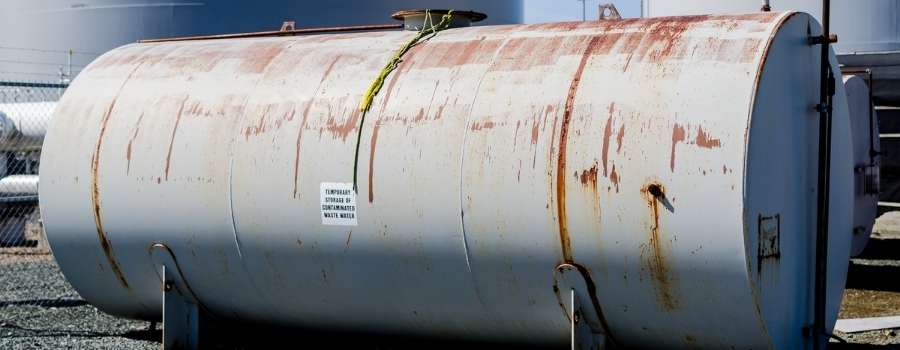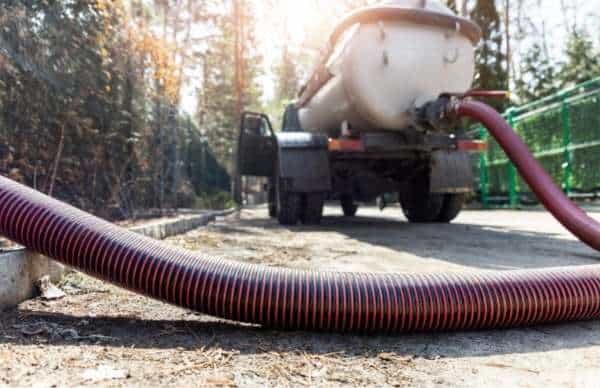
Septic tanks and holding tanks are two different methods for getting rid of waste, but they each have their own pros and cons.
If building off the grid or in an area where city sewer isn’t an option, you might be going back and forth with putting in a septic system or holding tank.
What’s The Difference Between A Septic Tank And A Holding Tank?
Septic tanks and holding tanks are both containers that hold wastewater from toilets, showers, and other home drainages. A septic tank contains two sections to separate solid waste and liquid waste before sending it to a leach field or mound. A holding tank simply stores wastewater.
In addition, a septic tank is usually buried underground in your yard to help regulate the water table. Holding tanks can be set up on any level surface including ground, concrete, or wood.
If you’re looking to save money or space, a holding tank might be better suited for your needs than a septic system!
Cost Difference Between Septic Tanks And Holding Tanks
Another difference between a septic tank and a holding tank is the cost.
- A septic tank will cost between $600 – $1000* (price based on 1000 gal. tank)
- A holding tank will cost about $385* (250 gal. above ground tank)
- Larger tanks run about $1200* (3000 gal. tank)
*The prices only reflect the cost of the tank itself and don’t reflect insurance, installation, or other components.
Septic tanks are usually much more expensive than holding tanks because they require professional installation. If space is an issue, you can save money by purchasing a smaller septic tank or choosing to install it yourself.
Holding tanks also cost less than septic systems and don’t need as many parts making them easy for DIYers to set up.
Pumping Septic Tanks Vs. Holding Tanks, What’s The Difference?
Before I get to the numbers I should note that a septic system only needs to be pumped an average of once every 2-3 years for an average-sized 1000 gallon tank based on year-round use by a three-bedroom household.
A smaller holding tank will need to be pumped every 3-6 weeks, depending on house size and frequency of use. A holding tank will have an alarm that warns you when pumping is required.
- Septic System: Averages around $150 for pumping (again, usually only required once every 2-3 years.)
- Holding Tank: The average is about $1 per gallon (ie., 200 gallons pumped = $200)
If the holding tank is at a cabin that you only go to once or twice a year for a week or two at a time, then the cost will average out to the same as a septic tank.
Of course, if you are putting things you’re not supposed to into your septic tank, you might be having it pumped out more often or even damaging it which will lead to very expensive repairs. If you want to know ways you might be damaging your septic system, check out this article.

What Are Some Important Facts About Holding Tanks?
Unless you already live off the grid, you’re probably less familiar with holding tanks than you are with septic tanks…heck, if you live or grew up in an older neighborhood as I did then you probably already experience life with a septic system.
Since holding tanks are less common to the general public, I’ve put together a list of things you may want to know if you’re thinking about investing in a holding tank.
- Some states, like California, require licensing for holding tanks. Most tank specialists will let you know if any licensing is required in your area.
- Holding tanks require as much expertise with installation as septic tanks do. They must be buried at the proper depth, and have piping run to them from the house.
- Remember, smaller tanks will need to be pumped frequently. An alarm will warn you when it’s time to call a pumping specialist.
- Similar to septic tanks, avoid flushing anything other than human waste into the tanks. This includes hygiene products, food waste, litter, coffee grounds, etc. If possible, use toilet paper designed for holding tanks.
I’ve written an entire article about ways you may be damaging your septic system that you can check out over here. - Unlike septic tanks and their systems, a storage tank doesn’t have multiple chambers to separate liquids and solids, nor does it have an outlet pipe to a drain field. Everything that goes into the tank stays there until it’s pumped out.
- Holding tanks are far easier to install than septic systems. Even after paying for any licensing, materials, and installation, your cost will be less than if you had installed a septic system.
- Holding tanks are considered temporary. This means they are very easy to unhook and move or replace.
Why Would You Use A Holding Tank Instead Of A Septic System?
In general, the decision to use a holding tank instead of a septic system has more to do with the property size and location than it does with your budget. If you have less space, go with a holding tank. If you have no city sewer system or water lines, then you may have to go with a septic system.
Septic tanks are also more common in areas where homes were built before the late 70s. If your home was built after this time period (or if it’s fairly new) and city sewage isn’t available, then there is a good chance you’ll be required to have a septic system installed.
As I mentioned before, the installation cost is a lot cheaper for a holding tank than it is for a septic system. The tank is usually several hundred dollars less, the tanks are smaller so they are easier to transport and install, so this also cuts costs.
On average, an install for a septic system can run upwards of $7000 according to homeadvisor.com. A holding tank would likely be less than half of that.
The biggest cost savings comes from the fact that holding tanks don’t require drain fields, baffles, or filters. Fewer components mean there is less than can break and require expensive repairs.
If you are building a house or cabin that will eventually be hooked into the city sewer or a septic system but you’re not ready for that yet, then a temporary holding tank might be an option to look into.
Growing up in Alaska, I knew many families that would build cabins out in remote areas that could only be accessed by small planes or boats in the summer and snow machines (that’s Alaska speak for snowmobiles) in the winter.
Moving a septic system out there would be extraordinarily expensive and, in some areas, downright impossible. Holding tanks were much more common in these situations.
Some areas may also restrict the use of septic leach fields due to groundwater being at risk of contamination, or if your own private freshwater well is deemed too close to where a septic system could be installed.
In these cases, a holding tank would be required since it could be pumped and the waste would be hauled away.
Final Thoughts
Which option you choose really comes down to if it’s for a permanent or frequently used home or for a small cabin/home that only gets used periodically or will only be used for a short amount of time.
A Septic system is the way to go for a permanent home that will be lived in for many years. The initial cost will be high but maintenance/pumping will be less frequent and the breakdown and leaching of greywater will happen automatically.
If you’re at a place for the short term or infrequently, or you don’t have the option for a septic system, then a holding tank will be a far cheaper option. If the use is quite infrequent then the average yearly cost for pumping will be the same as a septic system.
